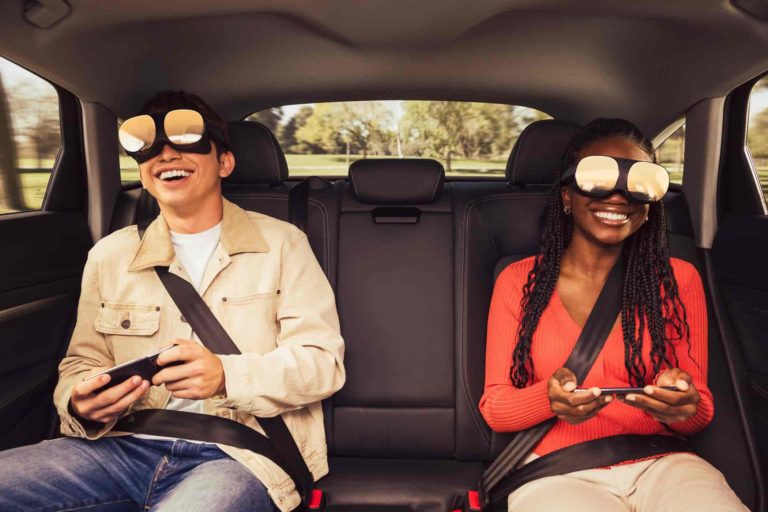
Customer Experience (CX) is defined by the user interfaces and click streams that brands engineer for their users. It’s everything from the layout of a webpage to the checkout process in an eCommerce app. CX defines customers’ loyalty to a given brand. So naturally, businesses are increasingly focused on strengthening CX initiatives.
One of those initiatives that continues to emerge in the post-Covid digital era is XR. That includes AR and VR, which each offer specific ways to help businesses optimize CX through various flavors of immersive brand interactions. The goal is to deepen and strengthen customer relationships and maximize their loyalty and lifetime value (CLV).
For example, VR users experience simulated realities powered by immersive head-worn hardware, 3D software, game engines, and AI-powered knowledge base software. In AR, digital content can add dimension and depth to physical-world scenes, such as virtually trying on clothes or accessories.
How else are AR and VR transforming CX? Here are 7 ways.
7 Ways XR Boosts CX
1. Personalization
For deeper customer experiences, brands like McDonald’s have utilized AR to surround customers with branded digital content. For example, they’ve invited children to customize Happy Meals using initiatives like these to connect with customers by offering them personalized brand experiences.
2. Productivity
Logistics and delivery business like DHL and FedEx have begun to use AR for vision picking. This applies line-of-sight graphical guidance to help warehouse and last-mile personnel identify parcels, leading to faster and more accurate customer deliveries.
3. Engagement & Education
Immersive product interactions continue to develop in AR. For example, Coca-Cola recently initiated “Hydr8,” an AR-based campaign whose animations support healthy hydration habits through educational sequences. According to Dobrian Dobrev, UX architect for Coca-Cola, “This technology is here to stay, and we need to adapt accordingly to remain relevant and be efficient, creative problem solvers.”
4. Contactless Shopping
Try-before-you-buy has emerged as a leading AR use case for its consumer utility and brand marketing effectiveness. Brands ranging from Toyota to Tommy Hilfiger have launched ways that their customers can visualize products in their spaces. This creates a more informed and satisfied customer and a more confident purchase, which is a mutually-beneficial outcome.
5. Interactive Packaging
One of the leading ways that consumers can discover AR experiences in the real world is through QR codes. Utilizing this familiar format, several brands have begun to add QR-triggered AR experiences to their product packaging. This breathes new life into a static asset, bringing packaging to life with everything from brand spokespeople to useful product information to help qualify a buying decision and boost conversions at the point of sale. Coca-Cola, Lucozade, McDonald’s, Absolut, and Discovery Wines are a few brands that have done this, and the list will continue to grow.
6. Employee Training
VR has a lasting impact on memory recall, due to its more visceral and immersive experiences. Enterprises have leaned into this by utilizing VR as a training modality. This has been particularly useful in areas like retail and emergency first responders. Beyond effectiveness, it has also impacted enterprise bottom lines as training can be done in a streamlined way at the employee’s location rather than relocating them or dispatching training agents to far-flung retail outlets.
7. Virtual Tours
The tourism and hospitality industries have also tapped into VR’s potential to create lasting impressions. In addition to offering a visceral experience that captures the essence of their environments, VR experiences can give customers a more informed view that helps them gain confidence in an advance travel booking. VR is increasingly used in real estate sales (accelerated in the Covid era) for many of the same reasons. And interior car tours are next on the list for VR disruption.
Competitive Edge
So there you have it. As time passes and technology evolves, AR and VR will transform how businesses develop CX… and how users encounter it. That will include a range of supporting technologies to enable and enhance these XR interactions. That growing list includes everything from 3D asset creation and optimization to AI and knowledge management systems.
Consumer brands and retailers will need to stay on top of these technologies as their innovation cycles will be a moving target. Those who keep pace can gain a competitive edge in an increasingly competitive CX world.
 Manpreet Singh Chawla is a Senior Digital Marketing Executive at Knowmax.
Manpreet Singh Chawla is a Senior Digital Marketing Executive at Knowmax.






